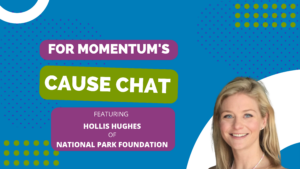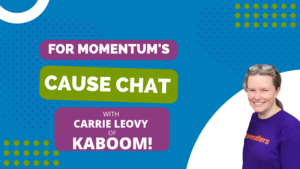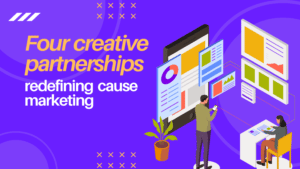Artificial Intelligence is a vast field, but at its core, it’s all about creating smart machines that mimic human intelligence. We know that companies are readily using AI to boost productivity and sales. In fact, 43% of CEOs reported using generative AI to inform their strategic decisions, according to a recent IBM study. In the context of nonprofits and corporate social responsibility, AI tools can make many cause marketing tasks easier: Identifying potential partners, Drafting proposals, Managing communication, Analyzing outcomes
Landing Corporate Partners Part 3: Close the Deal
We began this series with strategies for identifying prospective corporate partners to amplify your resources and advance your mission. In part two, we discussed how to ensure a successful first meeting with a potential corporate partner and follow up after the initial conversation. Now, let’s focus on how to close the deal and turn your prospects into long-term partners.
Landing Corporate Partners Part 2: Nailing the First Meeting
Before you meet with a potential corporate partner, it is essential to do your research. Review the prospect’s mission and values to tailor your pitch to their interests and needs. It will demonstrate to the prospect that you have taken the time to learn about their organization and are genuine in your interest in building a mutually beneficial partnership.
For Earth Month: a special interview with Hollis Hughes of the National Park Foundation
The National Park Foundation helps guide charitable giving to the greatest needs within the National Park Service. As the Director of Account Management at the National Park Foundation, Hollis Hughes oversees a portfolio of more than 65 corporate partners whose generosity has contributed to helping preserve some of America’s most treasured places.
Landing Corporate Partners Part 1: Prospect identification
Attracting new corporate partners is a time-consuming process that requires a thoughtful, strategic approach. First, nonprofit organizations need to invest in developing a compelling partnership narrative and partner value proposition. Prospect identification and outreach can be an exciting and rewarding part of your development work. Making partnership connections is our specialty, and we’re sharing lessons learned in our three-part series, Landing Corporate Partners. In this first installment, we’ll walk you through our best practices.
Women’s History Month: Campaigns We’re Watching
For Women’s History Month and International Women’s Day, For Momentum is shining the spotlight on social impact partnerships championing women. As a woman-owned and women-led company, we’re pleased to support organizations helping to alleviate poverty and showcase cause marketing campaigns getting specific about the challenges women face: Pay inequity, Unequal access to fair treatment under the law, and Lack of leadership opportunities. Take a look at these standout campaigns for inspiration.
Cause Chat with Carrie Leovy of KABOOM!
By: Ashley Byars As Senior Strategist at KABOOM!, Carrie Leovy brings over 22 years of experience to developing meaningful, sustainable […]
Top influences on employee engagement this year
It’s firmly established that cause partnerships can have a positive impact on employee engagement by giving employees an opportunity to support an important cause or social issue. Although economic unknowns on the horizon may impact the progress nonprofits have made, companies must continue to provide employees with opportunities to engage with the causes they’re passionate about. Here are a few ways we see cause partnerships shaping employee engagement programs this year.
Social impact trends — 2022 in rewind
Each year, we make social impact predictions for the year ahead based on our cause partnership expertise. 2022 brought more big shifts in cause partnerships. Let’s take a look back at how well our predictions held up.
Four creative partnerships redefining cause marketing
Are you reaching beyond the “tried and true”? Companies have long embraced donating a percentage of product sales to nonprofits and encouraging customers to do the same at the register. But they are increasingly looking to nonprofits for fresh ideas to engage their customers and communities. Only 40% of the CSR leaders we surveyed said that nonprofits were doing a good job at bringing unique opportunities to them. Check out four partnerships that are refreshingly creative.










